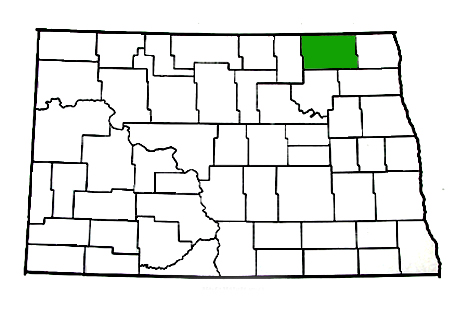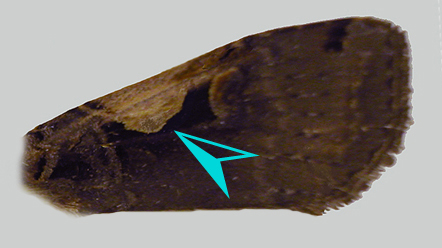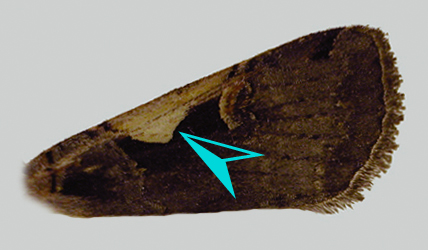| Moths of North Dakota |
Noctuidae: Noctuinae: Noctuini |
Xestia c-nigrum (Linnaeus 1758)
| Common name: Black-letter
dart/ Spotted cutworm..
Hodges #: 10942. Identification: Rfw 15.9 mm (&), fw dull brown to deep blue-gray, orbicular a 'V-shaped' spot. In any given locality, sex for sex, this species is a few mm. smaller than X. dolosa-- see key. Ptagiae usually bi-colored, contrasting with tegulae.. In dissected material, juxta shape is distinctive: broadened lower portion is < 1/2 the total height of juxta. Similar species: 10674, 10942.1, 10950, 11047. Distribution: .Transcontinental, from Alaska to Newfoundland, southward through temperate U.S., ranging further to the south in the Rockies and Appalachians. Also occurs in the Palearctic. Hosts: Records for this species and X. dolosa are confused in the literature. Between them, at least 60 species of herbs, vegetables, and woody plants have been reported from North America. Franclemont (1980) notes that X. c-nigrum (as X. adela) is a species of meadows and disturbed habitats; Lafontaine (1998) would associate most host records with X. c-nigrum. Note: Franclemont (1980) found genitallic differences
between Old World and New World populations and proposed the name X.
adela for New World material. Lafontaine (1998) found
intermediate populations from western Canada and Alaska. North
Dakota material would be |
Both specimens: ND Pembina Co.,
Head and thorax of X. c-nigrum with
|
||
|
|
|||
|
|||





